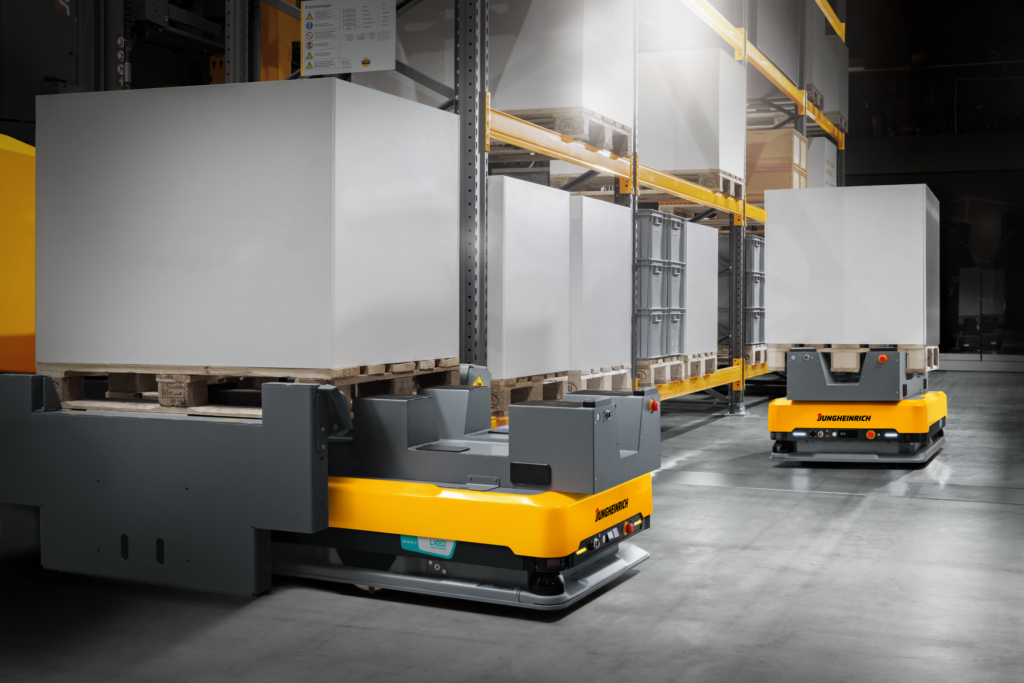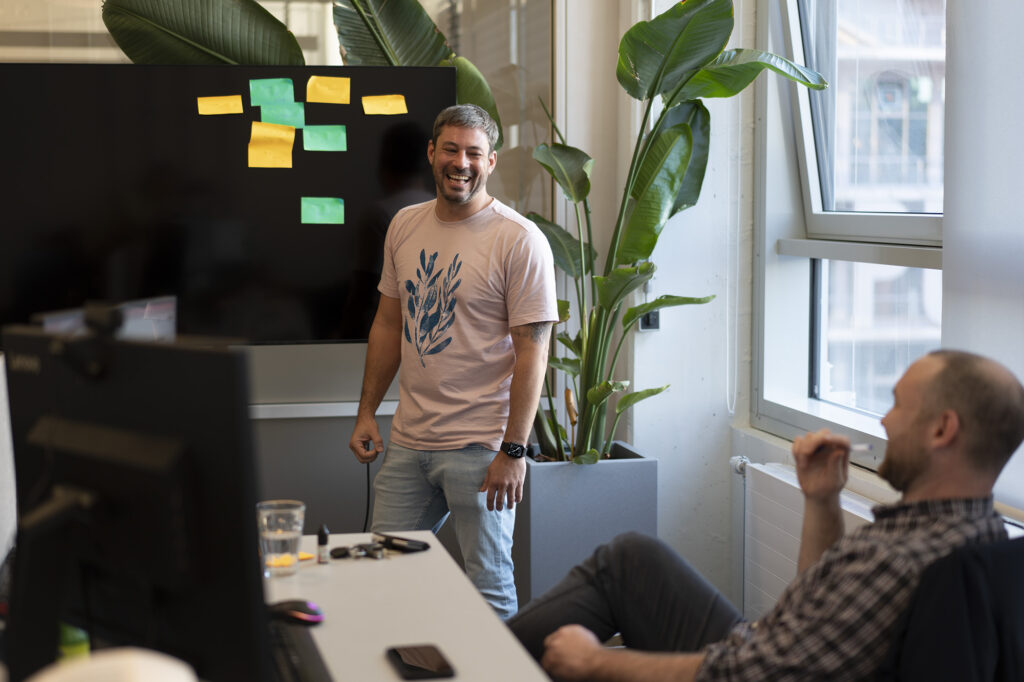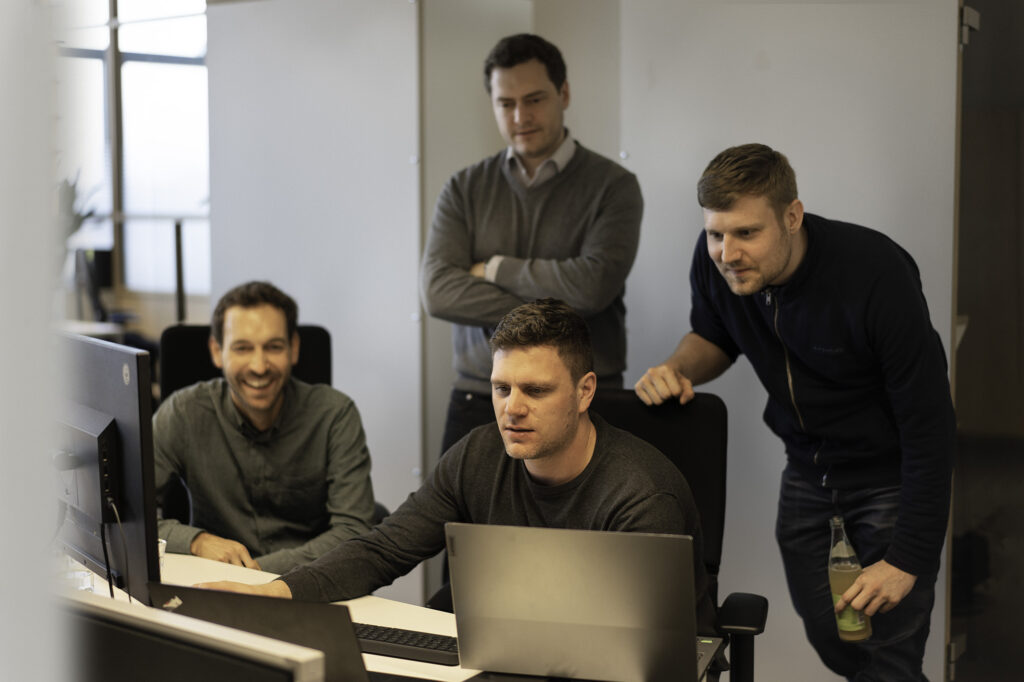Need for speed
Speed and efficiency: two words often linked to the German Arbeitsweise (way of work), reflecting a vision many strive for in the business world. However, the reality is far from ideal, as many companies deal with the effects of excessive bureaucracy. The results can be devastating – from missed market opportunities to overlooked consumer needs. That’s why fast and efficient development is especially important in today’s business landscape.
In recognising this, arculus understands the limitations of long-term planning in a rapidly evolving market. Long-term strategies can be constrained by assumptions that may soon become outdated. Thus, we focus on an adaptable, short-term approach that allows for quick responses to market changes. This method enables us to develop efficient robotic and software products, that are not only fast and sustainable but also flexible enough to adapt to immediate market needs, and feedback, steering clear of rigid, industry-specific models.
Thanks to a management team that understands the importance of efficiency, we can implement innovative strategies that make our development speed our greatest strength. This has been a part of our company DNA since the beginning, but the most recent example is the arculee M. It took our team less than 12 months to bring it to life: from idea to the final product.

Here is how we do it
Our secret to fast development lies in several basic strategies and practices. First and foremost, we prioritise a straightforward development cycle. By reducing unnecessary steps in the process, we can promptly roll out the product right after we’ve completed thorough testing. This process allows us to receive valuable feedback from the market, directly enabling our product managers to generate new ideas and optimisations that reflect real customer needs.
For instance, the development of the arculee M was a direct result of our market research and customer insights. The need for an evolved product was clear from the feedback on the arculee S, as customers were looking for enhanced features – like a higher load capacity. With a streamlined development cycle, our team was quick to respond, ultimately bringing a new robot to market in record time. This is mirrored in the evolution of our fleet manager, which has been similarly upgraded to a new version that reflects our proactive stance in keeping up with the dynamic needs of intralogistics through improved functionalities.
Our approach to product design
Building on the insights gathered from our market research and customer feedback, our approach to product design has been instrumental in rapidly evolving our solutions. Years ago, we made the strategic decision to build products in a way that allows us to reuse components across different hardware models. This method also enables us to seamlessly integrate new software into our hardware products, breaking the link between software features and specific robot models.
The main example of this concept is our Robot Control Unit (RCU®), which we consider to be the “electronics heart of our robots.” It serves as a core component that can be effortlessly swapped between our two current robot models, the arculee S and the arculee M. This flexibility simplifies our development process and significantly reduces the time and effort needed to implement robotics software for new iterations of hardware products. Moreover, it provides us with the necessary resources to continuously add new features and improve the quality of our solutions – rather than being bogged down by redundant, product-specific tasks. By avoiding the need to “reinvent the wheel” with each new release, we can scale our solutions more effectively, ensuring a steady enhancement of our portfolio.
The role of Scrum
Another element of our speed development is the use of Scrum, which allows us to break down complex tasks into manageable iteration cycles, typically known as “sprints.” During the 2-week sprints, each team has clear goals and focuses on specific tasks, encouraging a sense of urgency and collaboration. This way, our developers actively engage in direct technical exchanges with one another, ensuring that everyone is aligned and informed about project progress.

For all of that to work, we ensure that our developers maintain direct technical communication and rely on flat hierarchies. The result is shorter decision-making processes and faster cross-team coordination. This environment fosters a strong sense of individual responsibility and motivation among team members, all contributing to our ability to achieve rapid results in product development.
Flexibility as a consequence
I’ve already briefly mentioned some of the benefits of fast development: staying competitive, meeting customer expectations, and keeping up with industry changes. However, one advantage that deserves special attention is the flexibility that comes with our rapid development process.
By rolling out hardware projects in approximately 12 months and software increments in just four weeks, we are able to collaborate closely with customers. This allows us to tailor our products to their specific needs during development and easily respond to market changes and trends. We recognise that not every feature is universally applicable, emphasising efficiency, safety, and cost-effectiveness over short-term industry trends. By leveraging our developers’ capabilities and focusing on genuine demand, we maintain a flexible approach that allows us to offer customised solutions.
Full stack concept
An important addition here is that to actually solve customers’ pain points, we established a company culture of delivering not products, but full-stack solutions. This means our offerings extend beyond advanced Autonomous Mobile Robots (AMRs); they include an integrated fleet management system that ensures a cohesive and streamlined approach to intralogistics.
For that, we rely on a constant evaluation of key performance indicators (KPIs) such as “’jobs per hour” — a metric that directly reflects our robots’ efficiency. By rigorously assessing our efficiency and competitiveness, we can ensure that our speed in development translates into real-world effectiveness and value for our clients. It’s this dedication to measurable results and continuous improvement that differentiates us from competitors, cementing our status not just as a provider but as a business partner for intralogistics automation.

What you should take from this
At arculus, we are proud of the efficiency standards we’ve achieved for development. However, we do recognise that there is always room for improvement, and we are dedicated to continually refining our processes and seeking new ways to enhance our capabilities. Our goal is not just to maintain our current patterns but to consistently raise the bar and adapt to the evolving needs of our customers and the ever-changing landscape of our industry.
With all that said, I strongly believe that our straightforward approach can serve as a leading example in our field – and the development of the arculee M in record time is a testament to that. We prioritise a simplified development cycle, allowing us to promptly roll out products, gather valuable market feedback, and generate innovative ideas for optimisation. Our unique product design approach reduces development effort and enhances flexibility. Coupled with Scrum methodology and flat hierarchies, our culture of continuous improvement ensures we remain flexible and responsive to market demands, making us well-equipped to tackle the challenges of the future.
